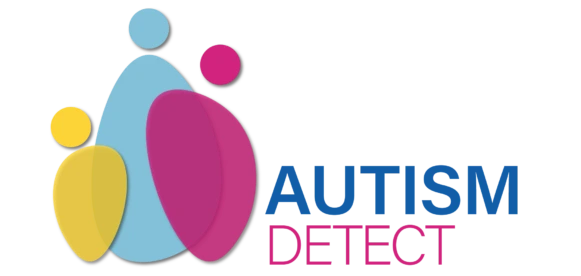If you’re a parent, teacher, or carer trying to figure out how autism and learning disabilities fit together, you’re not alone. It’s common to hear terms like autism and dyslexia or autism and dyscalculia, but knowing what they mean, and how they overlap can be a bit of a maze.
The truth is, around 30% of autistic people in the UK also have a learning disability, so this isn’t rare.
And yet, support can still feel patchy, especially when you’re trying to make sense of it all.
Whether you’re looking for autism and education support or just trying to understand what your child might be experiencing, the first step is knowing what you’re working with.
So, let’s clear up one of the biggest questions straight away:
What’s the Difference Between Autism and Learning Disabilities?
To understand how autism and learning disabilities interact, it’s helpful to start with a common question:
Is Autism a Learning Disability?
No, autism is not a learning disability. Autism is a neurodevelopmental condition that affects how a person experiences the world, particularly in areas like communication, social interaction, and sensory processing.
A learning disability, on the other hand, affects how someone learns and processes information. This might include difficulties with reading, writing, numbers, or memory.
That said, it’s not unusual for someone to be diagnosed with both. That’s where things can get confusing. It’s possible to have autism and dyslexia, or autism and dyscalculia, for example, and while these conditions can share some features, they require different types of support.
Common Types of Learning Disabilities Seen with Autism
Some learning disabilities appear more often in autistic individuals than in the general population. The most common include:
- Dyslexia, trouble with reading and spelling.
- Dyscalculia, difficulty with numbers and maths.
- Dysgraphia, problems with handwriting and written expression.
These fall under the umbrella of autism and learning difficulties, but each one needs its own approach when it comes to support.
ADHD, while not always classed as a learning disability, often overlaps with both autism and learning challenges. You can learn more in our ADHD and Learning Disabilities: Understanding the Overlap and Finding Support guide.
Why the Distinction Matters in Diagnosis and Support
Knowing the difference between learning disabilities and autism helps families, schools, and professionals understand how best to help. It also affects what kind of support a child is entitled to. For example, a child with both conditions may need a more detailed EHCP (Education, Health and Care Plan) that addresses each area of need.
Recognising both conditions allows for more targeted, compassionate, and practical help.
How Often Do Autism and Learning Disabilities Co-occur?
Understanding the difference is only part of the picture, what really matters next is how often autism and learning disabilities appear together, and what signs to look out for early on.
Key Statistics and Clinical Observations
According to the UK government, roughly 4 in 10 autistic people also have a learning disability. This makes the combination of learning disabilities and autism one of the most common dual diagnoses in children’s mental health and education services.
Common Comorbidities: Dyslexia, Dyscalculia, Dysgraphia
Children may be diagnosed with autism and dyslexia, or autism and dyscalculia, but not realise these are separate from autism itself. This can lead to delays in getting specific support. Dysgraphia, which affects handwriting and written work, can also appear.
These conditions can often be missed without proper assessment.
Recognising Overlapping Signs Early
Some signs of autism and learning difficulties can look similar, including struggling to follow instructions, trouble with writing, or finding maths confusing. The earlier these signs are noticed, the sooner support can be put in place. Support for autistic students in the UK often starts with a thorough assessment, ideally involving both educational and healthcare professionals.
What Challenges Do People Face with Both Autism and Learning Disabilities?
When someone has both autism and cooccurring learning disabilities, the challenges can show up in different ways (at school, in friendships, and in everyday routines). Understanding where the pressure points are can help parents, teachers, and professionals offer better support from the start.
Academic Struggles and Executive Functioning
For children with both autism and learning disabilities, school can be a real challenge. Difficulties with focus, organisation, and memory, often linked to “executive functioning”, can affect every subject. Add in autism and writing problems, like dysgraphia or difficulties structuring ideas, and tasks like essay-writing or note-taking can feel overwhelming.
Without tailored autism and education support, students may fall behind, not because they aren’t capable, but because the learning environment doesn’t match how they process information.
Social and Emotional Impacts
Many autistic students with a learning disability and autism diagnosis also face challenges with friendships, confidence, and self-esteem.
Struggling to keep up in class can make children feel isolated or anxious, especially if others don’t understand why they’re finding things harder.
Emotional regulation and peer relationships often need just as much attention as academic progress. That’s why a supportive school culture, guided by trained staff, can make a lasting difference.
Sensory Processing and Daily Living Difficulties
Sensory sensitivities are common in autism, but when combined with a learning disability and sensory processing issues, everyday environments can become difficult to manage.
A noisy classroom, scratchy uniform, or crowded hallway can affect a student’s ability to focus or feel safe. These challenges don’t stop at school either, they often affect routines at home and in the wider community.
Recognising sensory needs and creating adjustments is key to supporting independence.
What Support Is Available in the UK for Autism and Learning Disabilities?
Finding the right support can take time, but there are well-established options across the UK to help children and families manage learning disabilities and autism.
Educational Support: EHCPs, SENCOs, and Specialist Schools
Support in school settings often starts with a proper assessment. An Education, Health and Care Plan (EHCP) outlines the help a child needs, whether for autism and learning disabilities or another combination of needs.
SENCOs (Special Educational Needs Coordinators) play a vital role in making sure children get the right adjustments. This might include one-to-one support, extra time in exams, or access to specialist teachers.
Some children benefit from mainstream schools with additional support, while others may thrive in specialist settings. The right environment depends on the child’s needs, particularly in cases of autism and dyslexia or autism and dyscalculia, where more tailored strategies are often needed.
Therapies: Speech, Occupational, and Behavioural Interventions
Many autistic children with learning difficulties benefit from therapies that support communication, sensory needs, and everyday skills.
Speech and language therapy can help with social communication and understanding instructions. Occupational therapy often supports fine motor skills, which can be affected in autism and writing problems. Behavioural strategies might be used to reduce anxiety around transitions or learning tasks.
These therapies are most effective when combined with consistent autism and education support across school and home settings.
Financial and Community Resources for Families
- Families in the UK may be eligible for financial help, such as Disability Living Allowance (DLA) or Universal Credit with child disability elements.
- Local councils and charities also offer practical support for things like transport, sensory resources, or respite care.
- Community groups and peer networks can be a lifeline, offering advice and emotional support from others going through similar experiences.
- Finding support for autistic students UK often begins with local authority SEND (Special Educational Needs and Disabilities) teams.
How Can Strengths Be Recognised and Nurtured?
Support isn’t just about overcoming challenges, it’s also about noticing what each child does well and creating space for those strengths to grow.
Celebrating Neurodiversity in Education
Inclusive education for autism and learning disabilities means recognising each student’s strengths, not just their struggles. This includes valuing creative thinking, honesty, attention to detail, and deep focus.
Schools that celebrate neurodiversity create environments where all students feel seen and respected.
Building Confidence Through Personalised Learning
Every child learns differently. Personalised learning plans that build on interests, rather than focusing only on gaps, can make a huge difference.
Children with autism and learning difficulties often flourish when teaching is adapted to their pace and style, rather than trying to make them fit into rigid expectations.
Inspiring Stories from Families and Individuals
Families across the UK have shared how early intervention, flexible schools, and the right therapies helped their children thrive. Whether through specialist art programmes, coding clubs, or one-to-one mentoring, many students with learning disabilities and autism go on to build confidence and achieve their goals, when they are supported in ways that work for them.
Final Thoughts: Everyone Learns Differently, and That’s OK
Getting the right help starts with understanding what a child, or adult, needs. And this requires understanding the overlap between autism and learning disabilities, to make education and life more accessible for those who learn differently.
With early support, personalised strategies, and the right environment, children and adults with autism and dyslexia, autism and dyscalculia, or other learning challenges can thrive.
No one should feel like they’re facing this alone, help is available, and the earlier it’s accessed, the better the outcomes.
Whether you’re a parent seeking guidance, a teacher supporting a student, or someone exploring their own learning journey, knowing what to look for, and where to turn can make all the difference.
At Autism Detect, we provide expert assessments for both children and adults, helping you move forward with clarity and confidence.
Everyone learns differently. That’s not just okay, it’s something to build on.
Frequently Asked Questions
How can I tell if my child’s learning difficulties are related to autism?
Some learning challenges, like struggling with instructions, focus or writing, may be part of autism, while others may point to a separate learning disability, such as dyslexia or dyscalculia. A detailed assessment by educational and healthcare professionals can help clarify whether your child has learning disabilities and autism, or learning difficulties unrelated to autism.
Does autism fall under the disability act?
Yes. In the UK, autism is recognised as a disability under the Equality Act 2010. This means autistic individuals are legally protected from discrimination and are entitled to reasonable adjustments in education, work and public services.
What’s the difference between dyslexia and autism?
Dyslexia is a learning disability that mainly affects reading, spelling and writing. Autism is a neurodevelopmental condition that affects communication, social understanding and sensory processing. Some people may have both autism and dyslexia, but they are separate conditions with different support needs.
What is a high functioning learning disability?
“High functioning learning disability” is not a formal term. People sometimes use it to describe someone who has a learning disability but appears to cope well in certain areas. It’s more helpful to focus on the specific strengths and challenges an individual has, rather than labels that can be unclear or misleading.
What are the top 5 learning disabilities?
The most common learning disabilities include:
1. Dyslexia, reading and spelling difficulties
2. Dyscalculia, trouble with maths and number concepts
3. Dysgraphia, writing and handwriting problems
4. ADHD, attention and focus difficulties (not always classed strictly as a learning disability but often overlaps)
5. Nonverbal learning disorder (NVLD) – challenges with visual-spatial and social skills
These can appear alongside learning difficulties and autism, and identifying them early is key to effective support.










